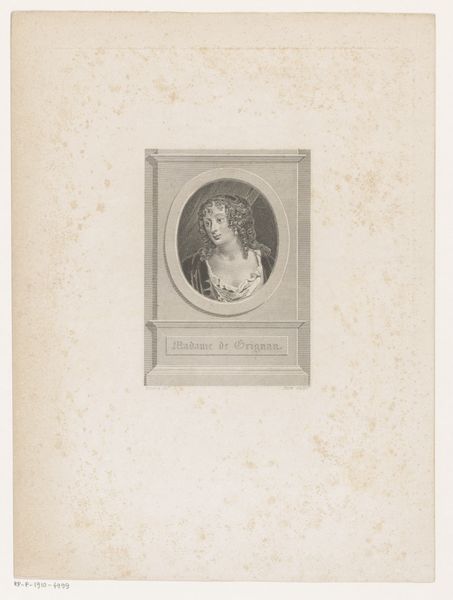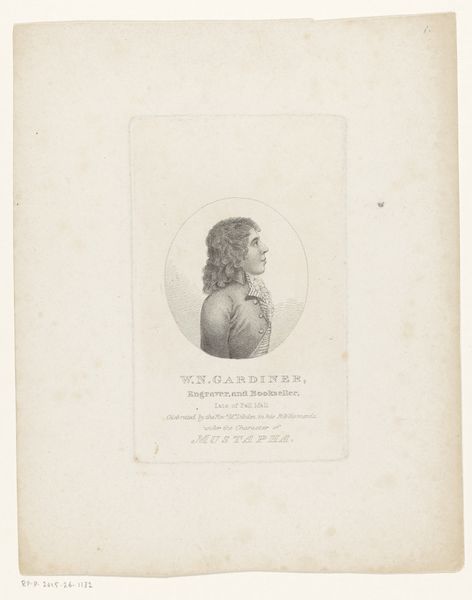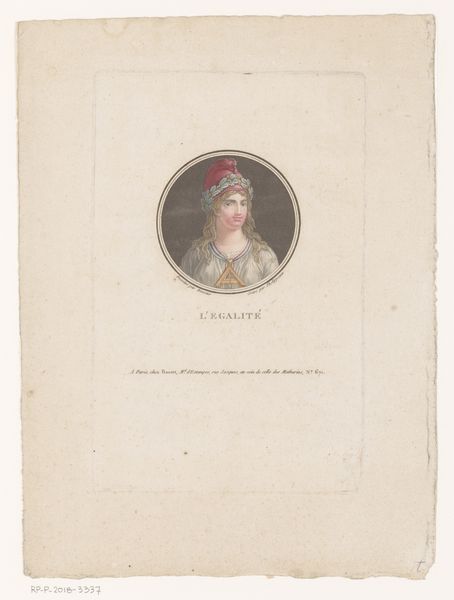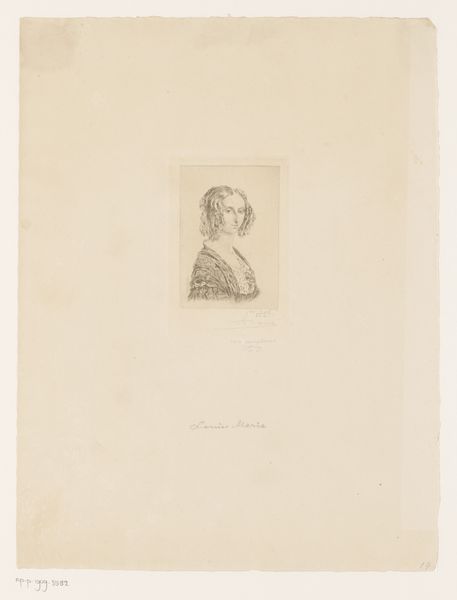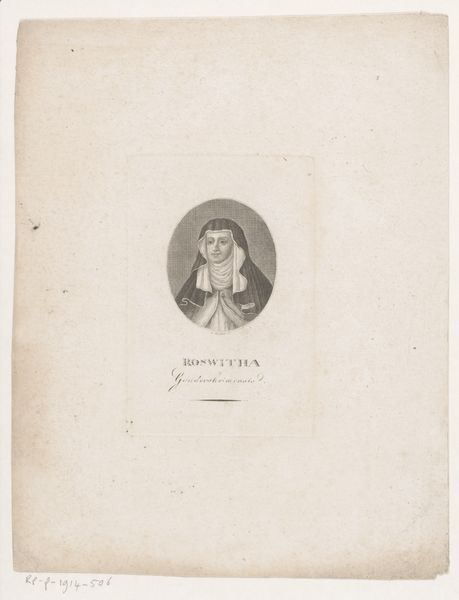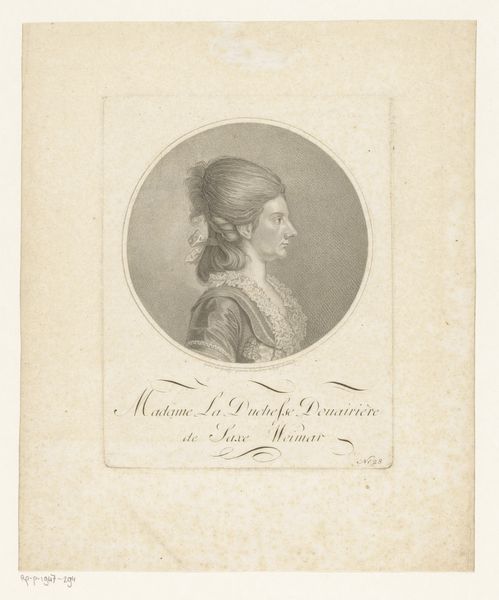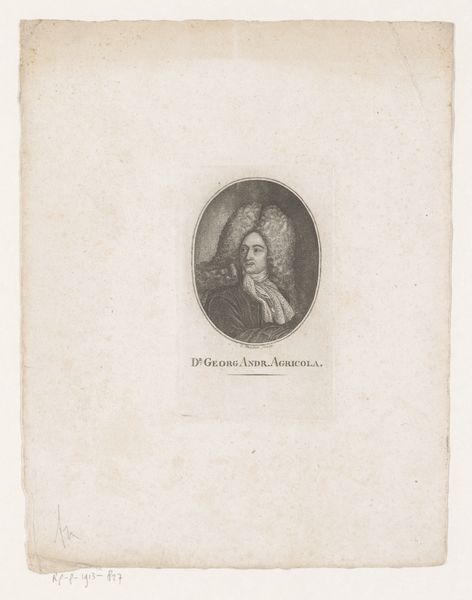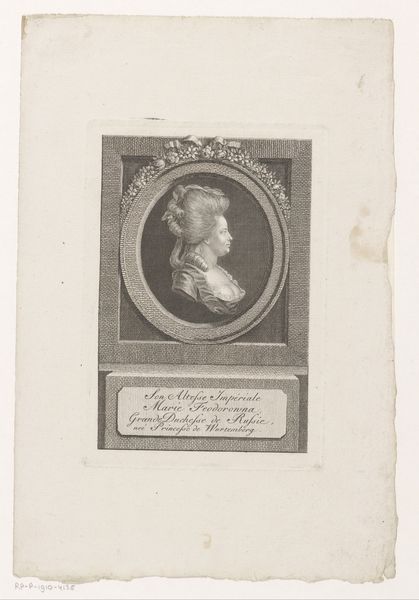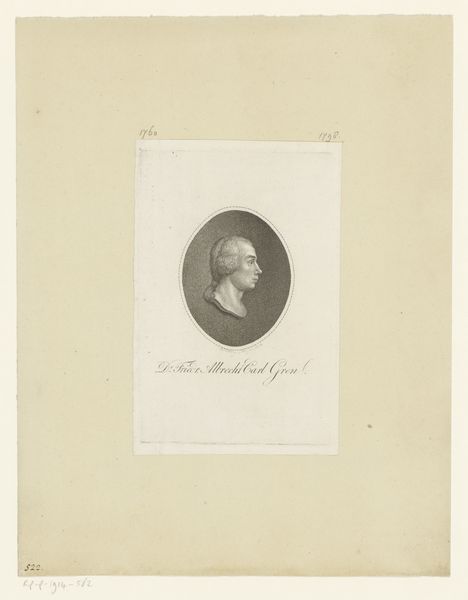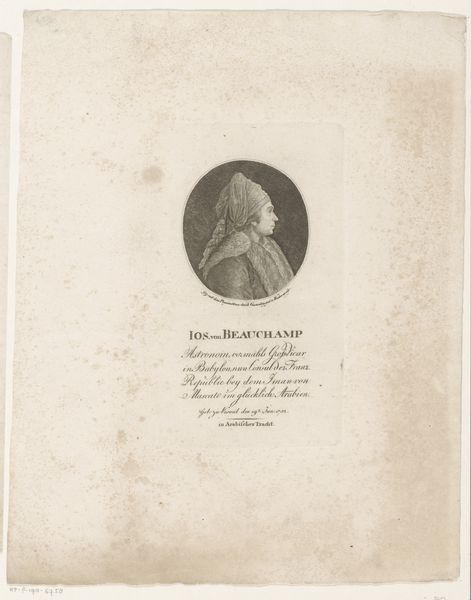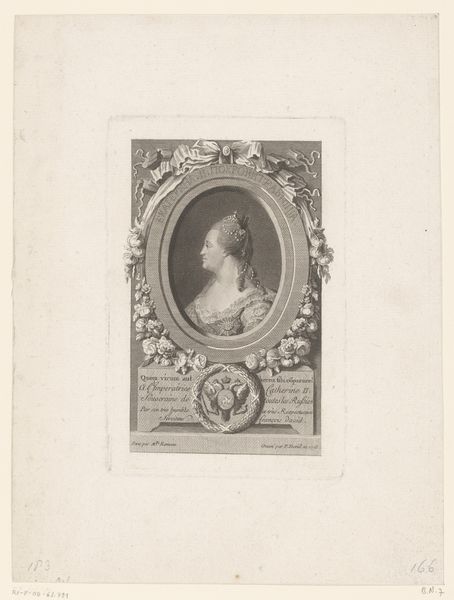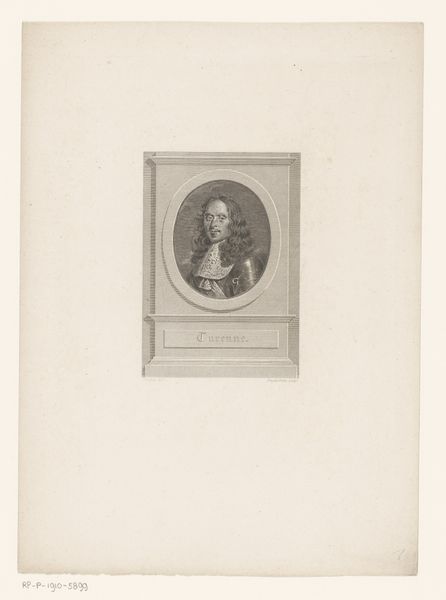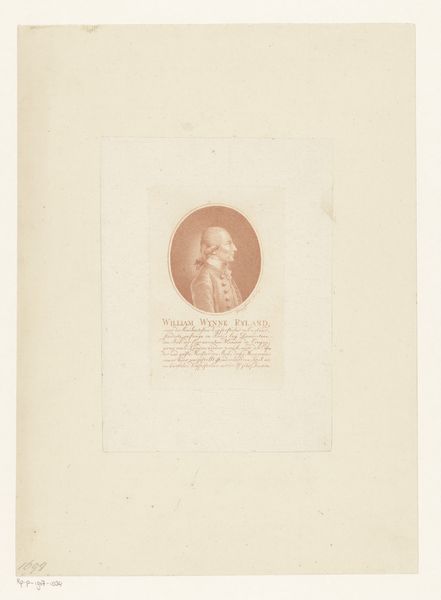
Portret van Anna Amalia van Brunswijk, hertogin van Saksen-Weimar-Eisenach 1776 - 1824
0:00
0:00
johannchristianernstmuller
Rijksmuseum
drawing, print, paper, engraving
#
portrait
#
drawing
#
neoclacissism
# print
#
paper
#
history-painting
#
engraving
#
monochrome
Dimensions: height 145 mm, width 91 mm
Copyright: Rijks Museum: Open Domain
Curator: Looking at this print, titled "Portret van Anna Amalia van Brunswijk, hertogin van Saksen-Weimar-Eisenach," which roughly translates to Portrait of Anna Amalia of Brunswick, Duchess of Saxe-Weimar-Eisenach, created sometime between 1776 and 1824, now residing here at the Rijksmuseum, what are your first impressions? Editor: My first impression is one of austerity. It's monochrome, a simple engraved portrait. She seems… guarded, or perhaps merely reserved, within that stark circular frame. What significance does she hold, beyond the title? Curator: Anna Amalia was an important figure during the German Enlightenment. Her court in Weimar became a hub for intellectuals and artists, attracting figures like Goethe and Schiller. So, while austere in presentation, this portrait hints at the immense cultural weight she carried. Editor: Ah, that context changes things! Suddenly, the restrained presentation feels deliberate, a choice reflecting the values of the Enlightenment—reason, order. A far cry from the flamboyance you often see in portraits of the aristocracy. Curator: Precisely. Note how the monochrome engraving reinforces this. Colour could have added warmth, perhaps a sense of intimacy, but that would arguably detract from the intent of conveying her intellectual influence and noble restraint. Editor: It’s fascinating how a visual symbol like the circular frame also contributes. It confines, yes, but also focuses the eye. It's almost like presenting her as a classical medallion, instantly associating her with the gravitas of ancient philosophers and rulers. A powerful bit of visual branding, isn’t it? Curator: Indeed! The symbolic framing adds a sense of timelessness. The engraving process itself connects to a wider culture of printmaking at the time, disseminating ideas and images amongst a growing reading public. The act of replicating her likeness, turning it into something easily distributed, expands her reach beyond the court. Editor: It all adds up. At first glance, one sees a simple portrait. But when you unpack the layers – the woman's role in history, the artistic choices, the medium itself – it speaks volumes about the cultural forces at play. Curator: And perhaps a silent acknowledgment to the continuing reverberations of history on image. It speaks about continuity, which the artistic image tries to bridge throughout time. Editor: Exactly, it reveals how deeply political a seemingly simple image can be.
Comments
No comments
Be the first to comment and join the conversation on the ultimate creative platform.
